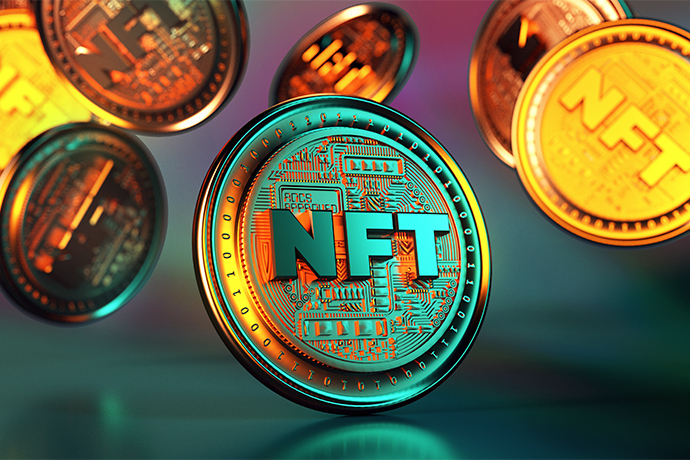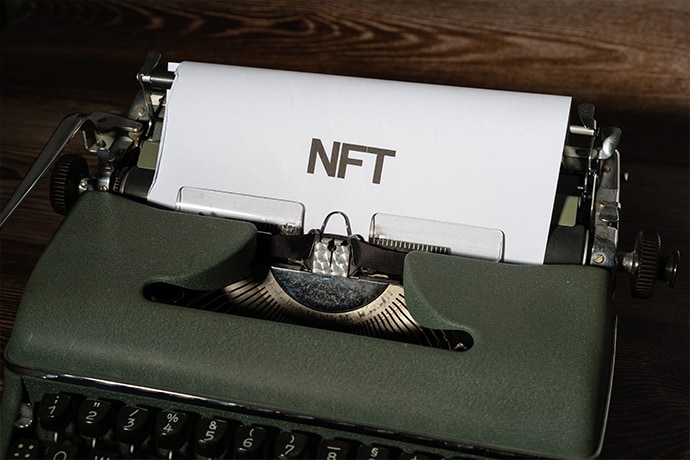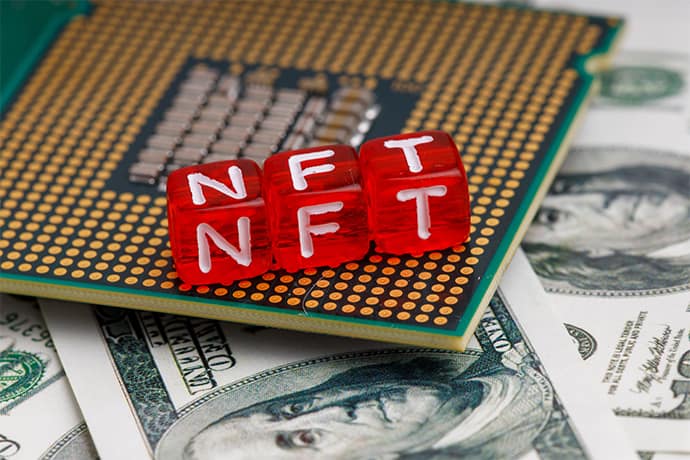 SPEAKERS
SPEAKERS
 TOPICS
TOPICS
The abbreviation is NFT, which stands for Non-Fungible Token, verifies the authenticity of a digital asset. It is non-fungible which means it cannot be traded with another non-fungible token or replaced with something else.

These unique assets are saved on a digital log on blockchain, only which can be accessed by those who are provided with the code. The definition of non-fungible token - an NFT is a one-of-a-kind asset, which means they can be used to represent items including works of art, photos, videos, audio, and other types of digital files.
Let’s put it in simple terms: NFS are secure irrevocable tokens that individually represent the ownership of digital assets. The consequence is you have the ability to verify the licence of digital assets like digital painting, animation, photographs, etc. You can collect or trade it online using cryptocurrencies. NFTs have been in use for more than eight years (since 2014) their popularity is growing rapidly because of the fact that they are uniquely identifiable.
The year 2021 was the time when the NFT craze began with the launch of NFTs called The Bored Ape Yacht Club . It’s collection of 10,000 cartoons of apes which hit the NFT marketplaces like thunder. That’s pretty much when everyone started talking about buying and selling NFTs and many digital artists got excited. But before we get into our topic further, let’s quickly take a look into fungible tokens to help us understand the unique nature of NFts.

There are digital objects created on Blockchain which we call tokens. In other words, a token is a thing which represents the digital object on Blockchain. When a physical object is converted to be represented into its digital format, the digital format of this object is represented as tokens on Blockchain. Tokens can represent an ‘object’, a ‘value’ or an ‘asset’. However, they can also represent something like a ‘feeling’, ‘fact’ or ‘quality’. For that matter, tokes can actually represent anything.
Now, fungible tokens are cryptographic tokens acting as a medium of exchange and can be used for payments on Blockchain. However, when tokens representing digital objects came into existence, there formed the difference between a fungible token and a non-fungible one. You can fractionalise, divide, split even exchange a fungible token. This does not change its value. But a non-fungible token is unique in nature and is not similar to any other non-fungible tokens. NFTs can be tokens which represent digital art, real estate (house/property) or precious stones.
Let’s take a look at the key characteristics of NFTs.
i) NFTs are cryptographically verifiable. The ownership of the token can be verified securely.
ii) They are unique. Each NFT record contains a particular attribute, this means no two NFTs are the same.
iii) NFTs are digitally scarce. Because NFT is available on Blockchain networks, the certificate of ownership is verifiable on other networks as well.
iv) They are easily transferable. NFTs guarantee the ownership of the transferred asset.
Now that we have an idea about the characteristics of NFTs we can now explore the uses.
Non-fungible means non transferable. An NFT can give proof of ownership - because they allow anyone to view them - but at the same time, allow the creator of the item to maintain copyrights, if he or she wishes to do so.
The production of NFT occurs on blockchain environments such as Ethereum, Smart Chain, Polkadot and Binance. The US based digital asset platform Binance allows you to buy, sell and trade crypto currencies (more than 130 of them) and there are many other digital asset platforms like it. However, we haven’t talked about creating an NFT yet.
The first thing to have when creating an NFT (an artwork, tweet, photograph, video or a song) is an account linking you to a wallet. Once you have an account, in other words a wallet, you need a marketplace for your digital artwork. The most common marketplaces for NFT are OpenSea, Axie Marketplace, Rarible and SuperRare. Among these the largest marketplace for crypto collectibles is probably OpenSea. Rarible is a platform where digital artists and creators openly buy and sell NFTs called RARI.
They compare these tokens based on their features. Foundation is another platform where your art is posted but only if you get some upvotes from fellow creators. Each NFT marketplace and each digital wallet might be operating on different procedures of approval and registration and also sale procedures.
Some of them require transaction fees or like in Foundation, you have to pay to post your artwork. The creation of an NFT (minting NFT) is basically the digital transformation of your artwork. Once you upload the work(s) which you wish to be NFT onto the marketplaces of your choice, you’re good to go. You might consider including the related information about your art (explanatory information and copyright issues). The NFT marketplaces where your items are for sale, allow you to make changes if and when you need.
Your items on the marketplace now can be bought by others and the only valid currency is Ethereum (ETH). Once the item is sold, the total is paid to the digital wallet of the seller which concludes the transaction.
Digitalization and cognitive Technologies have brought new products into our lives and NFT is one of them.

We find NFT in many sectors including cinema and music, pretty much all entertainment industry. Being almost a digital autograph, an NFT can be used for patenting purposes, with academic articles and for intellectual property. It seems possible to use it in the real estate industry as a way of digital follow-up or digital proof (proof of ownership, proof for transfer of title).
Each NFT is unique which makes it possible to act as a ticket for concerts, films or other performances. It can even be a wedding invitation. It will be possible to attend events and even to travel by trading NFT. In the future, we will experience more examples of unique digital assets created by using cryptography and cryptographic technologies.
At the time and age that we live in, it is possible to make a digital copy of various works of art easily. Intellectual property and copyright issues are being discussed more than ever. In order to protect the copyrights and the extended rights of intellectual property, NFT acts as the perfect tool to serve the purpose. NFT is a verification of the authenticity of a digital asset. The market places where NFT is sold and bought, protect the rights of the artist. On top of this, the artist continues to make earnings whenever the NFT is purchased by another buyer. This allows the digital property to have a sustainable existence on the market. As well as protecting the copyrights of the artist, NFT is known for increasing the market productivity for entertainment, health and education industries. Unlike the physical assets, NFT offers possibilities in a wider range for those who are in the business of transforming physical assets into digital assets.
If you’d like to know more about how NFTs work and get a better understanding of one of the most interesting aspects of digital transformation, please refer to our website and learn from our expert speakers like Mehmet Unal, Nicolas Nova, Sadie Clayton. Speaker Agency works with keynote speakers who are experts in their fields to make sure you’ll find the information you need.